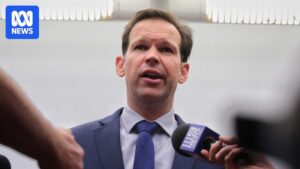
The Albanese government’s recent economic round table has concluded, sparking discussions on potential future reforms. While such initiatives could be beneficial, it is crucial to remember the lessons from past economic reforms, particularly those of the 1980s and 1990s. These decades are often lauded for their transformative impact on Australia, yet they also ushered in significant challenges and controversies.
During these years, Australia witnessed a series of economic changes that, while boosting growth, also led to scandals and systemic issues. The reforms contributed to underemployment, precarious work conditions, and a surge in property prices, rendering housing unattainable for many young Australians. The period also saw the privatization of critical infrastructure, raising questions about the wisdom of transferring natural monopolies to private interests.
The Consequences of Economic Reforms
Despite the positive narrative surrounding the “golden era” of reform, the outcomes were not entirely beneficial. Some reforms led to scandals that culminated in royal commissions, such as those in banking, aged care, and the notorious robodebt scheme. Furthermore, the introduction of inflation targeting in the early 1990s contributed to soaring property prices, exacerbating social inequality.
Privatization efforts during this time also sparked debate. While intended to enhance efficiency, the handover of public assets to private entities often resulted in monopolistic practices, affecting service quality and pricing. The era’s reforms, though pivotal in shaping modern Australia, left a legacy of mixed outcomes.
Voices of Concern and Rising Inequality
Back in 2000, concerns about these reforms were already being voiced. At the Reserve Bank’s annual conference, US economist Brad DeLong highlighted the increase in inequality resulting from the 1980s and 1990s reforms. He noted that while these policies spurred productivity growth, they also widened income and wealth disparities.
“The burst of productivity growth in Australia in the 1990s has been accompanied by a widening of inequality in income and wealth,” DeLong stated. “Policies that are not perceived as inclusive have little long-run chance of persisting.”
DeLong’s observations have proven prescient, as these inequalities now fuel political discontent among younger Australians. They express frustration over housing affordability, environmental degradation, and intergenerational tax inequities. Research from the Reserve Bank corroborates these concerns, showing a gradual increase in income share for capital owners at the expense of workers since the 1970s.
The Rise of Underemployment
Economist Bob Gregory from the Australian National University also raised alarms about the labor market’s failure to generate full-time jobs post-reform. By 2000, underemployment had become a significant issue, with many workers struggling to secure stable, full-time employment.
“Many good things have happened, but looking back over the discussion of the last two days, there seems to be perhaps a little too much optimism and also perhaps an unwarranted degree of satisfaction with the 1990s outcomes,” Gregory remarked at the RBA conference.
The rise of casualization and precarious work has had profound social consequences. Underemployed individuals face challenges in securing housing, budgeting, and planning for the future, with banks and landlords often reluctant to engage with those lacking stable incomes.
Future Directions and the Need for Reform
As the Albanese government contemplates its next steps, it must address the grievances of young Australians, who are burdened by stagnant wages and soaring property prices. The Per Capita think tank highlights the enduring impact of wage stagnation from 2012 to 2022, while economists warn of “extraordinary intergenerational inequity” in Australia’s tax system.
Treasurer Jim Chalmers has acknowledged the need for tax reform, emphasizing the importance of addressing these inequities. However, he also cautions against hasty changes, recognizing the potential for unintended consequences.
“I think our tax system is imperfect, and one of its most troubling imperfections is best seen through an intergenerational lens,” Chalmers stated.
The lessons of the past underscore the complexity of economic reform. As Australia navigates its future, careful consideration of these historical insights will be crucial in crafting policies that foster inclusive growth and address the challenges facing the nation today.







